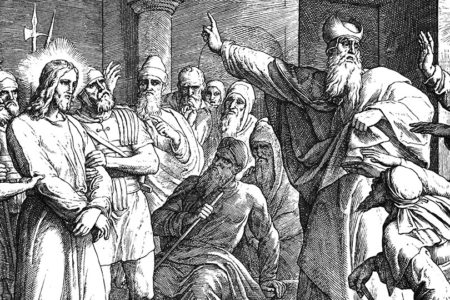The Question of Time
It is often joked about among Jewish people that whenever the time is set for an appointment or a date, the time specified will not be the actual time to begin. It is understood—even as people are arriving late for the wedding, bar mitzvah, or other event—that the clock is ticking on “Jewish time.” This somewhat annoying yet insignificant feature in many circles of Jewish life takes on larger proportions in the timing of the various Jewish holidays.
In my family, a conversation took place each year just before the Jewish New Year, Rosh Hashanah. The question always arose, “Are they [the holidays] going to be early or late this year?” Knowing that holidays have fixed dates, how could such a question even be raised? A glance at any Jewish periodical will yield the answer. Two dates can be seen. The date most familiar to us comes from the Gregorian calendar, which is used in most countries around the world. The other date is religious, taken from the Jewish calendar. These calendars have numerous differences. The names of the months are different; the number of days in a year is different; the leap years are different; even the number of months in a year is sometimes different.
The Jewish calendar measures a day, not chronologically, but by daylight. Each new day begins after the sun has gone down. The new day begins in the dark and lasts until the following sundown. For example, Tuesday at 10 p.m., according to the Gregorian calendar, is really Wednesday morning, according to the Jewish calendar. This means that summer days are longer than winter days. The Jewish calendar bases the measurement of each month on the appearance on the new moon. A lunar month—the length of time it takes for the moon to make one revolution around the earth—lasts 291/2 days. Thus, the 12 Jewish months alternate between 29 and 30 days.
The beginning of each month or new moon is considered a holy day. In Old Testament days, the shofar, or trumpet, was blown while burnt offerings were given as a memorial before the Lord (Num. 10:10). The new month or new moon is known as Rosh Hodesh (the head of the month). Since the destruction of the Temple, the celebration of the new moon has become less significant, but to this day it is observed with special prayers recited on its arrival.
Twelve lunar months of 291/2 days yield 354 days, a difference of 11 days each year from the solar calendar. The Bible mandates that holidays be kept in their “appointed season” (Num. 9:2–3). In light of that mandate, periodic adjustments must be made with the calendar. Therefore, one leap month is added seven times every 19 years. It is during these times that the Jewish calendar shifts from the customary 12 months to 13.
The Jewish calendar bases its year on Judaism’s traditional belief that the earth was created 3,761 years before Christ. Thus, to establish the Jewish year, simply add the number of the current Gregorian year to 3,761. To avoid designating Christ as Lord, the Jewish calendar uses B.C.E. (before the common era) or C.E. (common era) instead of B.C. (before Christ) and A.D. (Anno Domini, in the year of our Lord).
Until the year 359 A.D., the arrival of the new moon was announced by the Sanhedrin, the supreme judicial body for Jewish life, and was based on the testimony of two eyewitnesses. They had to appear before a special council to answer questions about the sighting of the thin, visible crescent of the new moon. If the council was satisfied with the information given by the two witnesses, they would process it with their own secret astrological and mathematical formulas. If, after all of that, the information proved reliable, the Sanhedrin would send torch signals from mountain top to mountain top to notify all of the communities in Israel that the new moon had been officially sighted. In the year 360 A.D., the Sanhedrin’s closely guarded formulas for determining the new moon became public information and ultimately led to their declining power. Today, anyone can secure a copy of a Jewish calendar. It provides a wealth of information, including the exact time of the sunset, when to light the Sabbath candles, corresponding Gregorian dates, and other timely facts.
So, what difference does the timing of the Jewish calendar make to us? Much, in every way. First, it ties the Bible reader to the times and seasons in which the biblical feasts—feasts that Jesus celebrated—were observed. Second, questions on the sequence of time involved in the death, burial, and resurrection of Christ can be readily answered. Third, it can explain why anniversary dates in Israel might not be the same as ours. (The anniversary of Israeli Prime Minister Rabin’s assassination was November 4 on the Gregorian calendar, but the date on the Jewish calendar was Heshvan 12, which fell on October 25, a difference of 10 days). Finally, it reiterates the great care given to detail in Judaism—even to the question of time.







